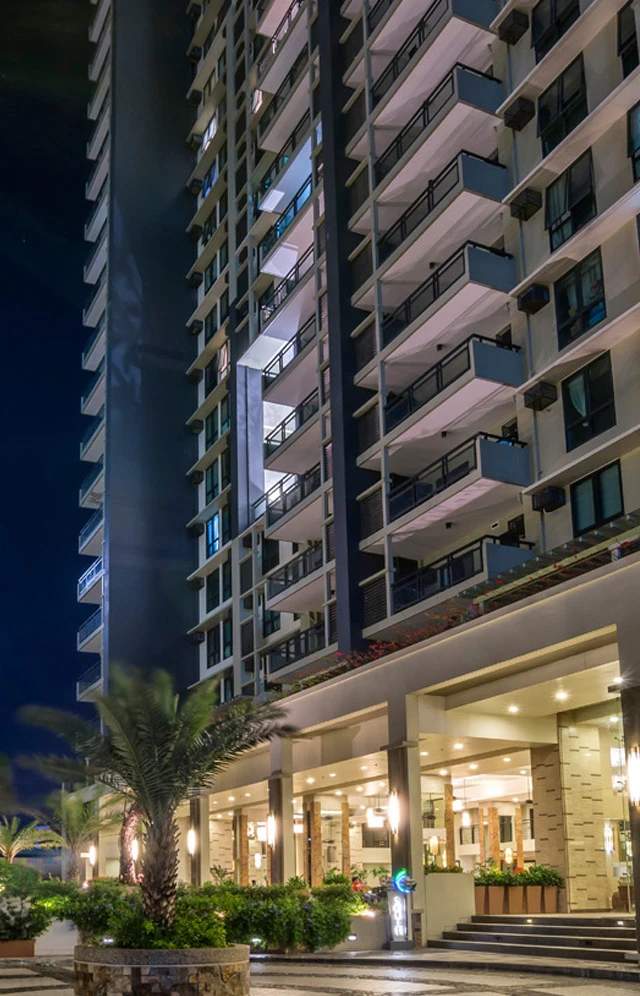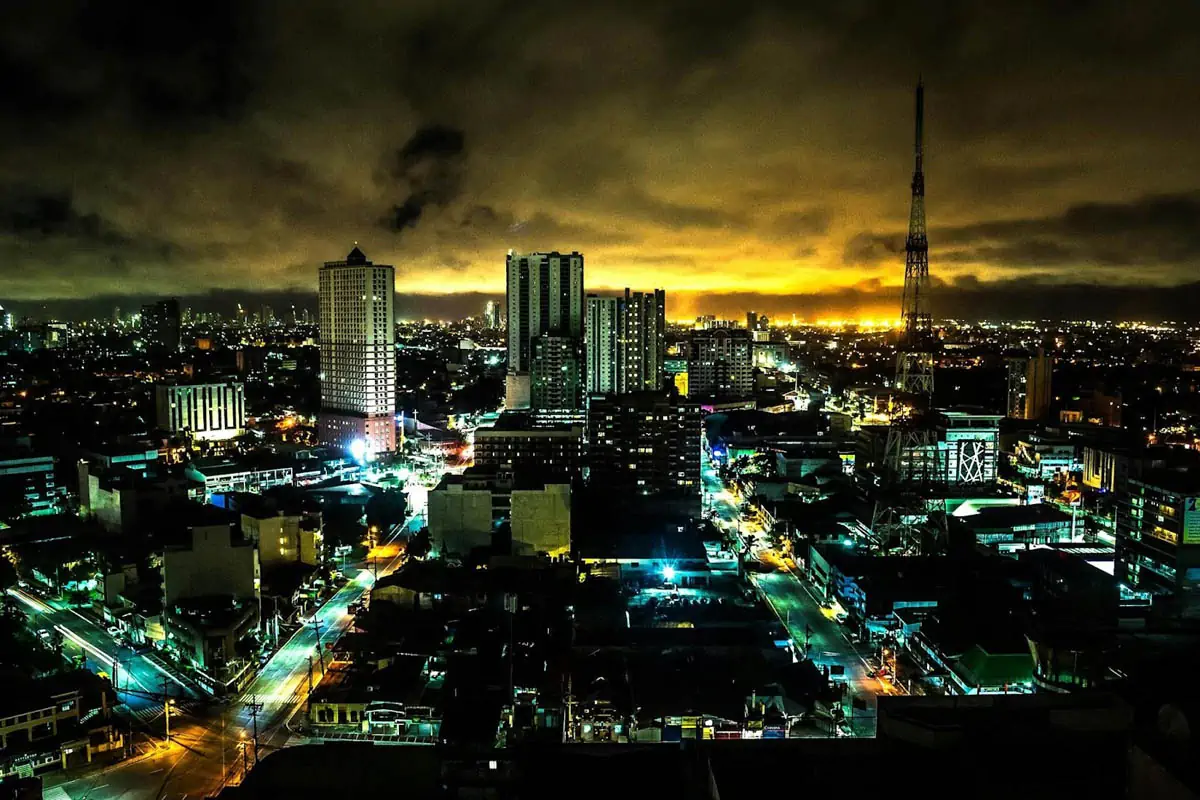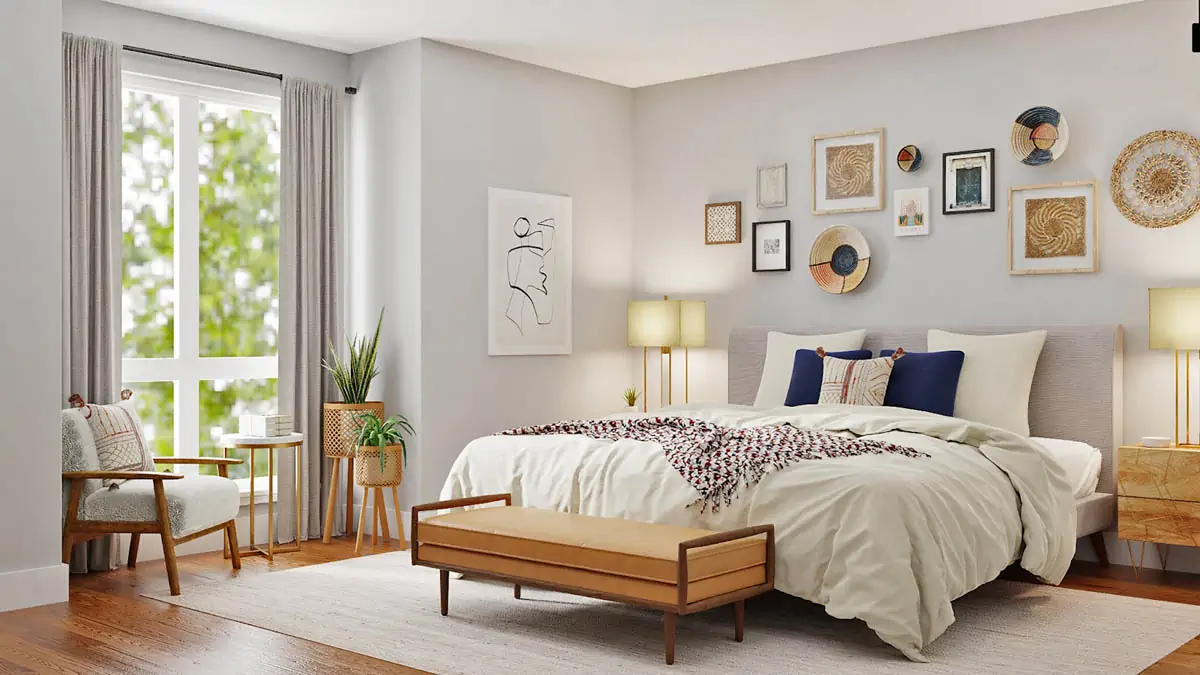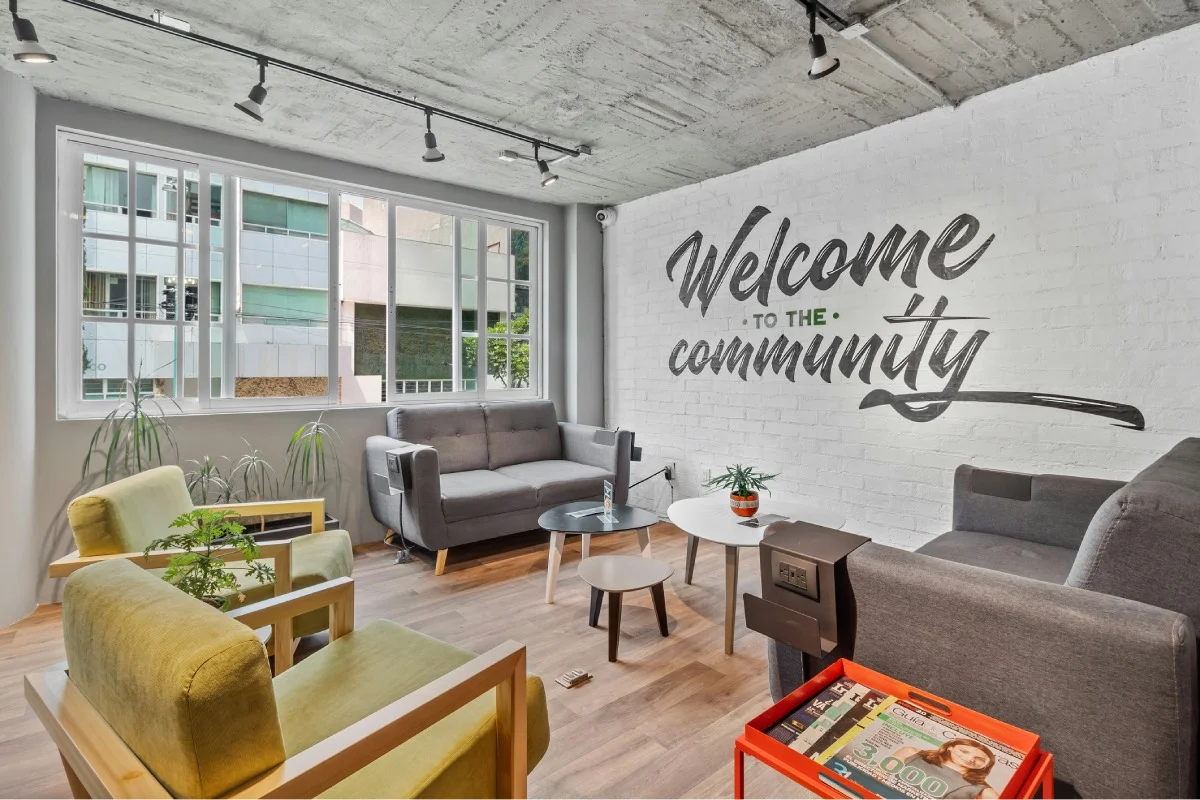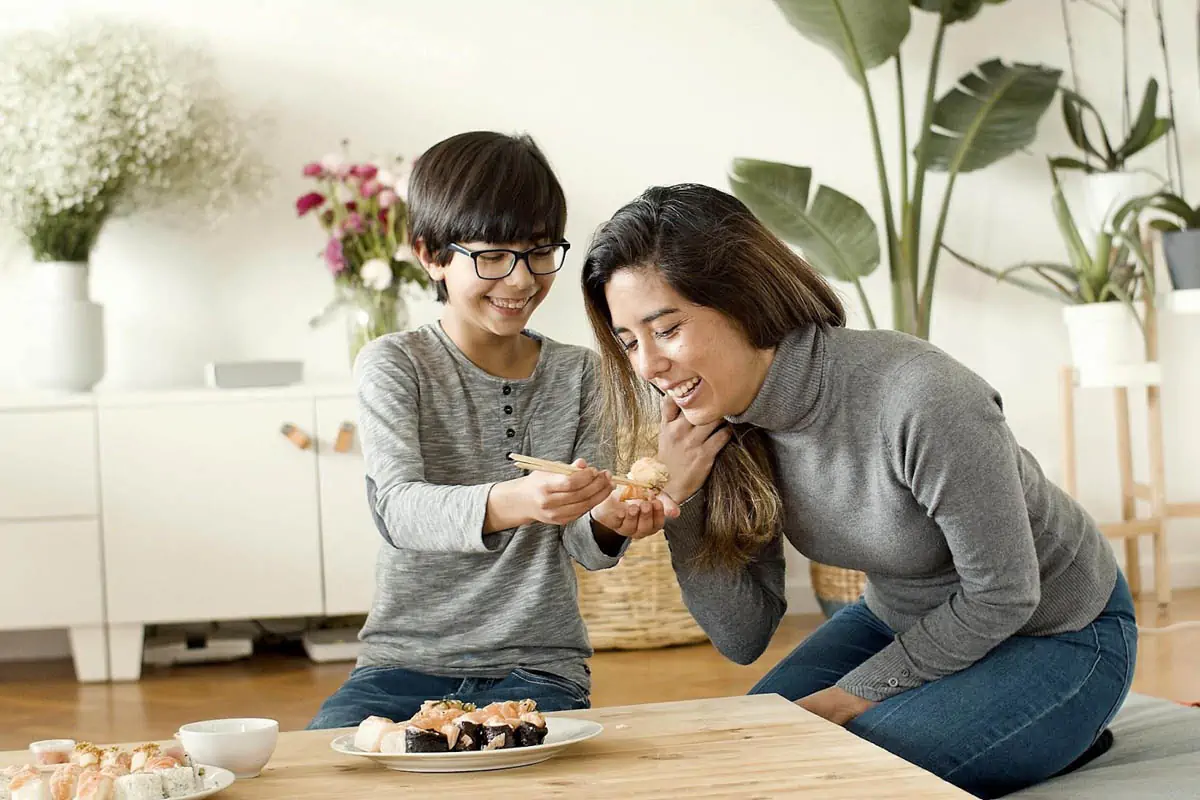The simple, humble bahay kubo is the first thing that comes to mind when Philippine architecture is talked about. However, there’s so much more variety and color to our country’s design aesthetics that can serve as the best inspiration for your condo interiors. Indeed, if you want to make your DMCI Homes unit more homey and cozy, turn to Filipino design to nail the makeover project.
The good thing about being in a rental condo at one of DMCI Homes’ communities is that you can be as creative as you can possibly be in designing your home. DMCI Leasing allows renters to spruce up spaces, as long as the renovation works are in compliance with the policies. With the freedom to personalize your own rental condo, you can easily feel at home.
In this article, we’ll take a look at the different local architectural icons and styles so you can pick up a few design inspirations for your DMCI Homes condo rental.
Philippine architectural styles for your design inspiration
Philippine architecture is a reflection of the rich history of the country. In fact, if you want to find remnants of the nation's colorful past, you simply have to turn to built spaces. Thus, those who want to take a piece of a particular era in their homes can benefit from using Philippine architecture as a reference for home design.
These are the architectural styles that dominated the Philippine real estate industry through the years:
1. Pre-Hispanic Period: Torogan
During the pre-colonial era, the icon of Philippine folk architecture is the palaces of tribal groups in the country. One of the most popular is the torogan, the traditional house of the Maranaos. This kind of dwelling served as the residence of sultans and datus.
A torogan has columns underneath the main structure, elevating the house above the ground. Its walls have plywood sticks, while the roofs are made of dried coconut leaves. Inside the home, you won't see any partitions, so the residence looks like one big hall.
How to incorporate this Philippine architecture style in your DMCI Homes condo unit:
One of the notable characteristics of torogan is the rectilinear and curvilinear plant-based designs and folk motifs called okir. The legendary bird sarimanok is among the most common patterns in these motifs.
To bring a piece of torogan in your home, buy okir figurines, paintings, and sculptures from local artists in Lanao del Sur. These are excellent accent pieces to display in your coffee or console tables. You may also hang woven fabrics with okir designs on empty walls in your living room. It will give a good pop of color to a bare space and make it more inviting. As you introduce new hues to the room, don’t forget feng shui design principles.
2. Pre-Hispanic Period: Bahay-Kubo
Another architectural wonder during the Pre-Hispanic period is the popular bahay kubo. Originally, this house was on stilts and can be accessed through a ladder. It has three areas: the main living area, the space beneath the main structure called silong, and the roof space or bubungan.
The main living area has walls made of light material, commonly bamboo rods. The windows are huge, allowing more air and natural light to come in. Some bahay kubos have awning windows, while others are sliding, made with plain wood or Capiz shells.
Interestingly, the simple bahay kubo has largely influenced modern Philippine architecture, with new buildings following its sustainability principles.
How to incorporate this Philippine architecture style in your DMCI Homes condo unit:
Imitate the same cozy, rustic atmosphere in bahay-kubo by introducing bamboo and capiz shells in your rental space. Bamboo aesthetics can be in the form of window blinds and shades, framed mirrors, carpets and mats, and room dividers.
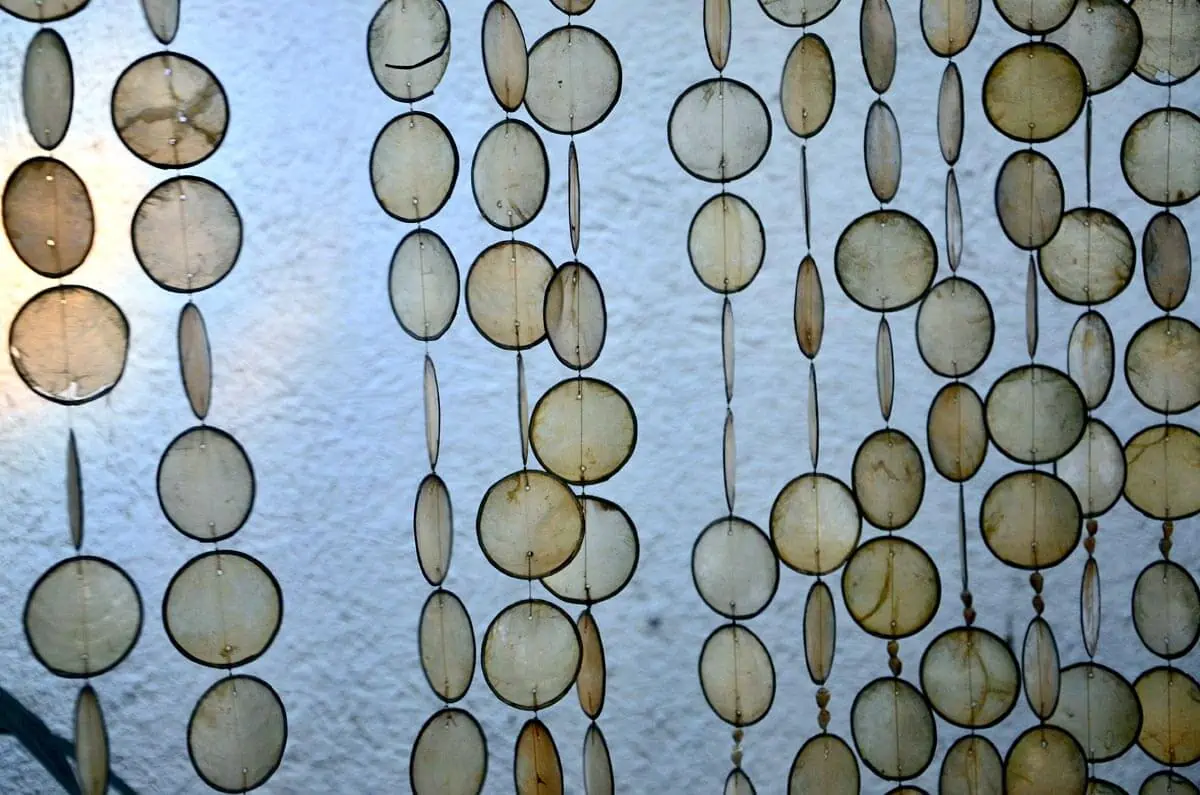 Photo courtesy of Antonio Castellano via Unsplash
Photo courtesy of Antonio Castellano via Unsplash
As for the Capiz shells, the best way to incorporate it is to have a pendant lighting made of this material. It’s a visually-appealing focal point in any space. With this ensemble, you can reflect the best of Philippine vernacular architecture in your interiors.
3. Spanish Period: Bahay na Bato
During the colonial era, the architectural structures in the Philippines reflected touches of European architecture. A lot of the bahay kubo characteristics were still there, but the main material shifted from wood to brick and stone. Bahay na bato emerged, and it became the residence of wealthy Filipinos at the time.
It’s characterized by an overhanging upper story, which often feature balustrades, ventanillas, and capiz shell sliding windows. The ground floor is made of solid stone blocks or bricks. Outside, it has a rectangular appearance. This kind of architecture in the Philippines, though centuries old, is still a common sight in provinces.
How to incorporate this Philippine architecture style in your DMCI Homes condo unit:
Most bahay na bato use colorful floor tiles with geometric patterns called baldozas mosaicas. It’s typically seen in the zaguan or ground floor, the area where horse carriages are kept. If you have a little more budget for your condo renovation, you may opt for this kind of floor treatment. Otherwise, you can simply use it in one area of your unit, say, in the bathroom.
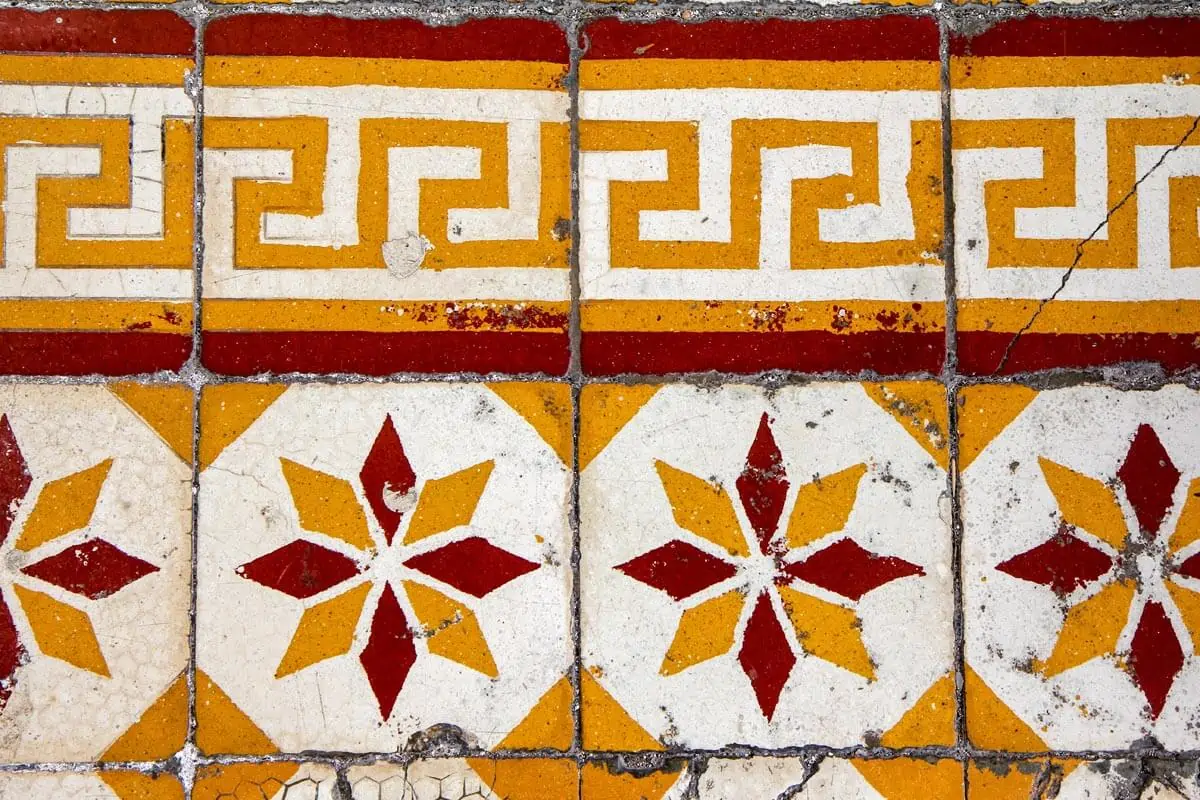 Photo courtesy of rigel via Unsplash
Photo courtesy of rigel via Unsplash
There’s also the option to create an accent wall out of these colorful tiles. Such an accent wall works best in a room with a neutral color scheme. Spaces that don't have any striking architectural feature will likewise benefit from this, as it can provide visual interest to the area.
4. American and Commonwealth Period: Art Deco Buildings
Art Deco was among the most prominent architectural styles during the 1920s, influenced by the modernist movement taking off at the time. By the 1930s, the Philippines saw a number of new structures designed by renowned architects and artists, namely Juan Arellano, Juan Nakpil, and Andres Luna de San Pedro. Some of the most famous Art Deco buildings in the Philippines are the Metropolitan Theater, Nicanor B. Reyes Sr. Hall, and Jaro Municipal Building.
The basic elements of Art Deco architecture include the bold use of contrasting colors, and ornate detailing, namely geometric shapes, chevrons, and zigzags.
How to incorporate this Philippine architecture style in your DMCI Homes condo unit:
Think bold and opulent when introducing Art Deco to your space. Choose vibrant colors, especially those with jewel tones, such as emerald and purple. Pair it with neutrals like cream and beige so the rich hues are balanced out.

Photo courtesy of Spacejoy via Unsplash
In your choice of furniture, prioritize angular, geometric forms, and then focus on the patterns mentioned above in your upholstery. For other fixtures in the space, bring out the luxurious feel of the room by adding polished marble, granite, and metallics.
5. Contemporary Period: Minimalist Homes
Although minimalist architecture seemed to be a hit in recent years only, this style actually began in the 1960s, when artists began to reject the elaborate designs of buildings in the previous years.
It forms part of Philippine modern architecture and stands out with its simple, plain materials, clean lines, and repetitive details that evoke order. Here in the Philippines, it has been the most prominent style in modern homes, especially in condominium buildings.

Photo courtesy of Avi Werde via Unsplash
How to incorporate this Philippine architecture style in your DMCI Homes condo unit:
“Less is more” is the mantra of minimalist architecture. With that, start with clearing out the clutter in your unit. Throw away the things you haven’t used in a long time to give room for more negative space.
Once you’re done, it’s time to introduce design pieces. Your priority should be multi-purpose furniture and fixtures that don’t take up so much space. A great example is the ottoman, which can serve as a chair, coffee table, and storage area. If possible, opt for an open floor plan as open spaces are a notable characteristic of minimalist interiors.
Philippine-Architecture-Inspired home in a carefully-designed community
While it’s good to have the freedom to personalize your home, the benefit of renting in DMCI Homes doesn’t stop there. As much as your unit reflects the best of Philippine architecture, the actual community is likewise carefully designed.
If you’re still in the process of finding a rental home that would match your personality, you can choose among these DMCI Homes communities, which are all unique in their architectural themes:
- Accolade Place in Quezon City. This community boasts of boutique hotel architecture that makes it distinct from other vertical residences. It has an intimate atmosphere and unconventional style.

Lap pool at Accolade Place
- Brio Tower in Makati. This residential enclave’s architectural style is Asian contemporary, which promotes the principle of zen: serenity and harmony. You’ll easily enjoy peace and quiet in this condominium.
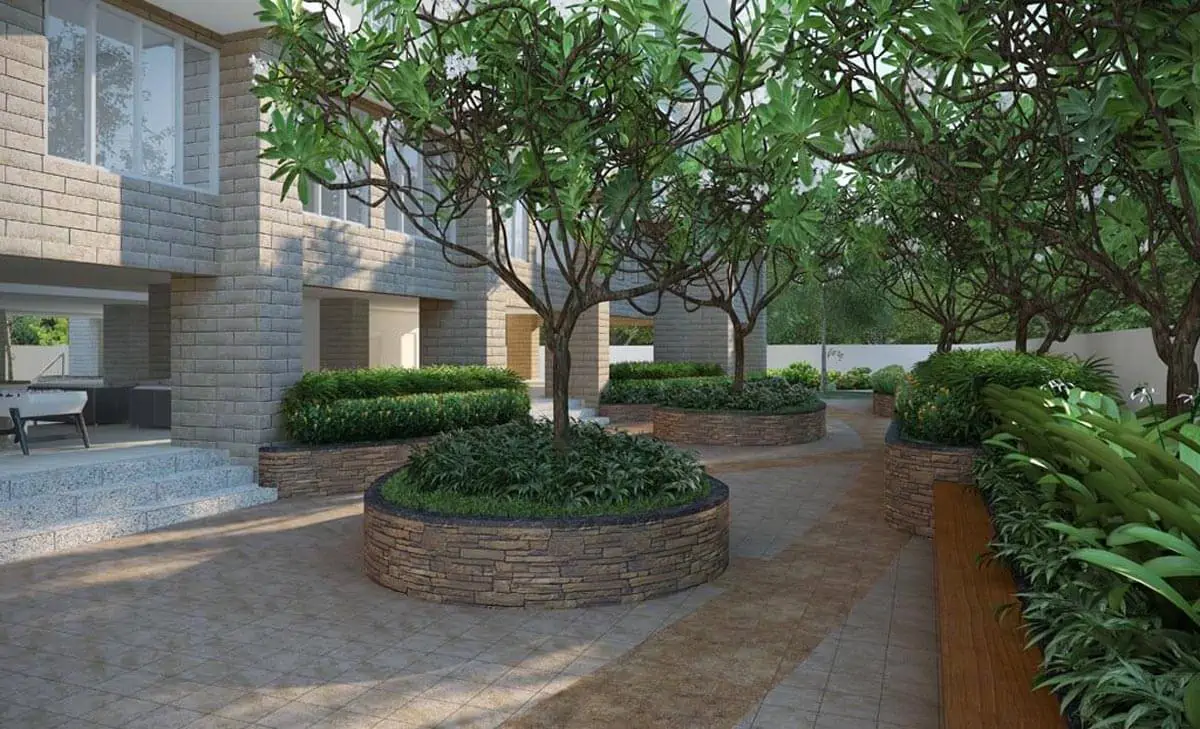
Landscaped gardens at Brio Tower
- Cedar Crest in Taguig. Neo-Asian minimalist is the architectural style of this vertical residence, featuring clean, simple lines and spaces, and resort-like amenities.
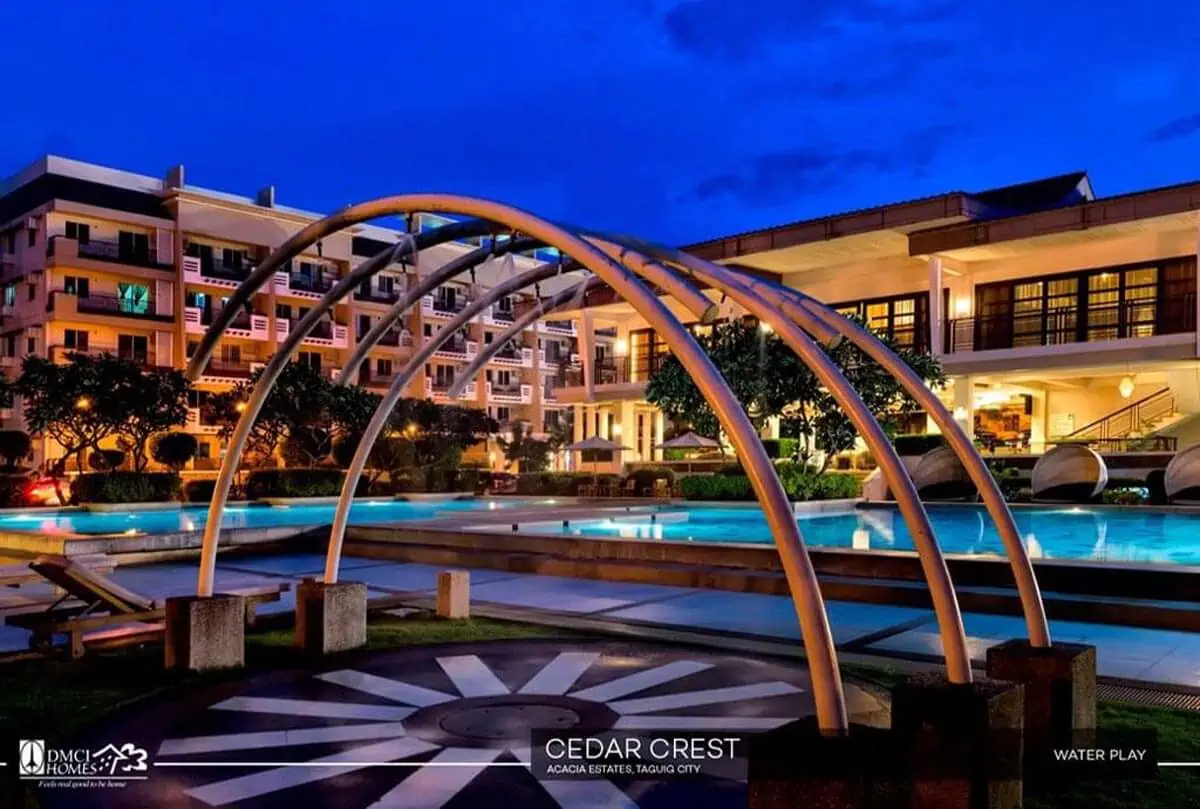
Interactive water play at Cedar Crest
- East Raya Gardens in Pasig. This condo features a Balinese architectural theme, which is reminiscent of a luxury tropical destination.
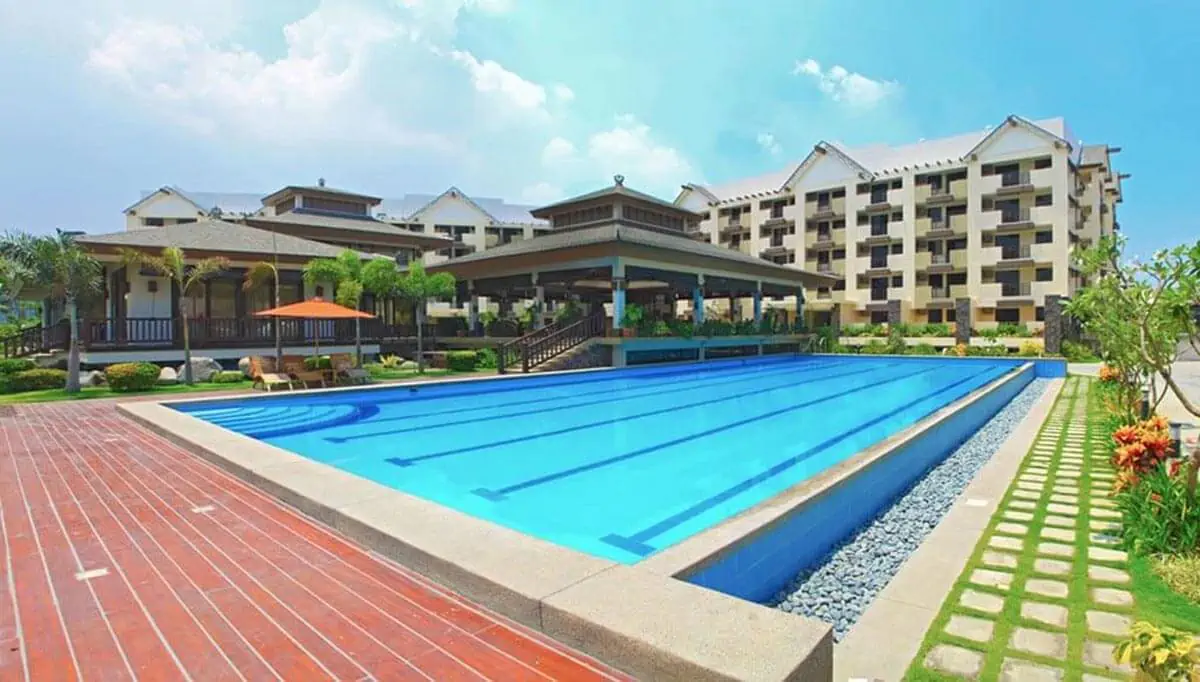
Lap pool at East Raya Gardens
- Flair Towers in Mandaluyong. With a modern tropical architecture theme, this community combines minimalist aesthetics with functional features that accommodate the hot, humid climate of the tropics.
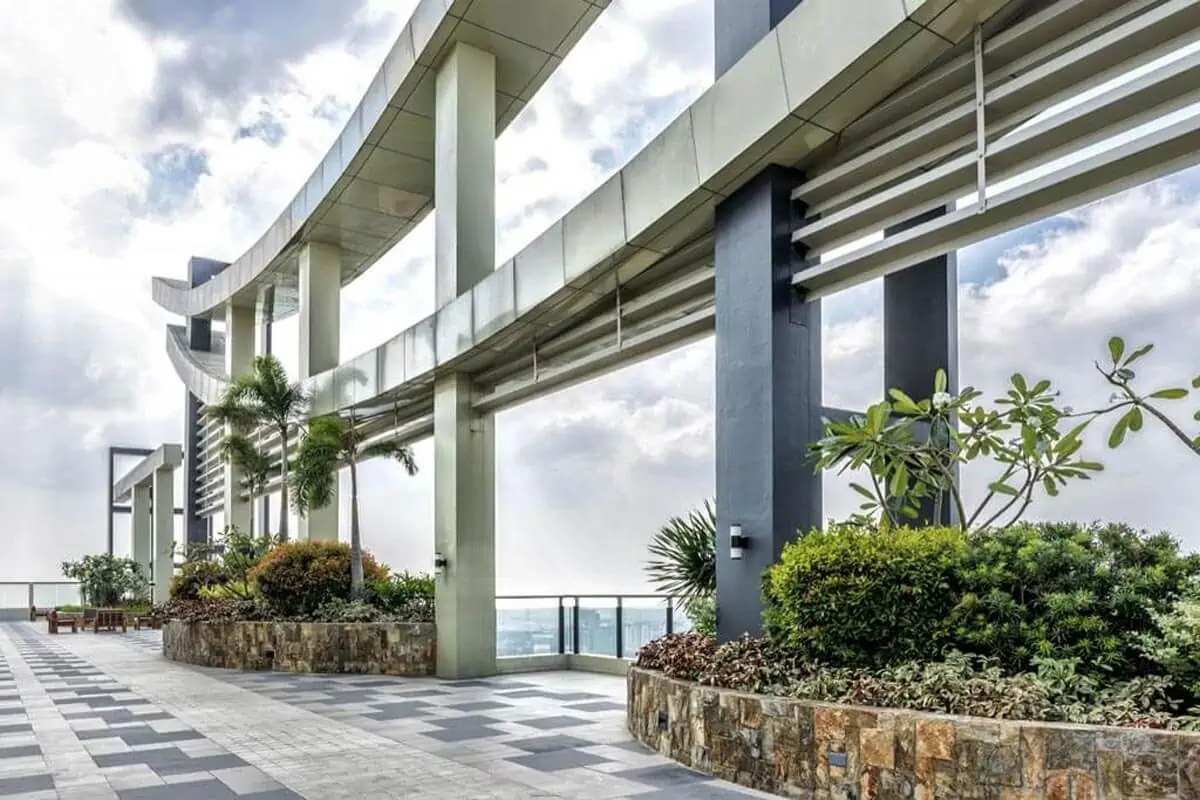
Roof deck at Flair Towers
In DMCI Homes, you can bask in the art and beauty of architecture. Moreover, you get the benefit of belonging to a welcoming community and meeting fellow renters with unique life stories.
Key takeaways
With its wide range of aesthetic styles and cultural influences, Philippine architecture is a rich source of inspiration for condo design. Explore different themes as you spruce up your home. To organize your makeover project, take note of these steps:
- Create a vision board. It’s good to have a lot of design options, but it can get a little overwhelming when you have too much. You don’t want your design to be cluttered either. A vision board can help you put ideas in order and see how they complement each other.
- Calculate the cost. Condos now come in affordable rental prices, but makeover projects are a different story. It’s not a secret that finances are the biggest stressor in these projects. Right from the beginning, you should decide on a budget and provide a buffer in case there will be additional expenses.
- Consult the landlord and the property management team. The last thing you want in this exciting project is finding out that your makeover plans aren’t allowed in the condo. So before you start anything, discuss your renovation plans with your landlord and the property management team. This is especially important when you want to do drastic changes, such as changing the floors or the layout of the space.
Turn to Philippine architecture for design inspiration in your DMCI Homes condo. In case you’re still searching for the perfect unit, visit the official DMCI Leasing website. Know more about the different properties here.
For more updates about rental options, check out our social media accounts, Facebook, X, Instagram, and YouTube.

